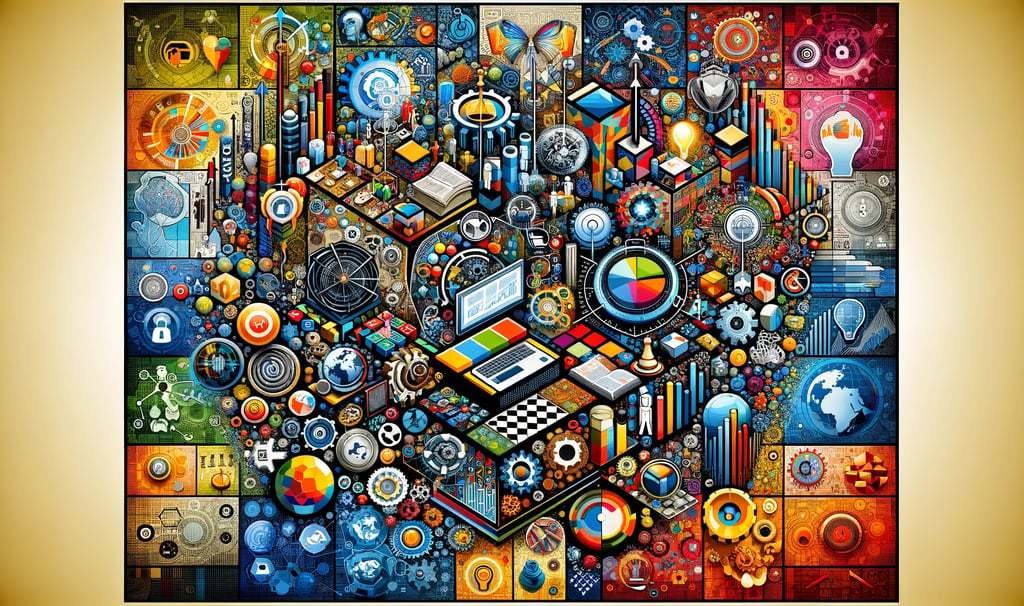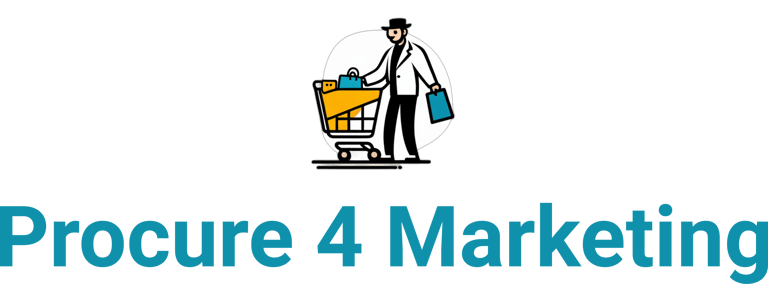Analyzing the Marketing Environment
An explanation of the marketing environment (micro and macro) using a detailed Starbucks case study to illustrate each of the key factors, from customers to technology.
MARKETING
The Procure 4 Marketing Team
9/5/20234 min read


Quick Answer: What is the marketing environment?
The marketing environment includes all the internal and external factors that influence a company's marketing decisions. It is broken down into two components: the Microenvironment (internal forces you can influence, like Customers and Competitors) and the Macroenvironment (external societal forces you must adapt to, like Economic and Technological trends). Analyzing both is crucial for building a successful marketing strategy, as exemplified by a company like Starbucks.
What is the Marketing Environment?
The marketing environment is the complex landscape of forces that surround a business and affect its ability to operate and serve its customers. Understanding this environment is not a one-time task; it's an ongoing process of monitoring and adaptation. A successful company is one that can anticipate and respond to changes in this environment to identify opportunities and mitigate threats.
What is the Microenvironment? (The 4 Cs)
The microenvironment consists of the factors close to the company that directly impact its ability to serve customers. These are elements that a company can influence or control to some degree. We can analyze this using a 4 Cs framework.
1. Company
What it is: The internal factors of the business itself, including its resources, capabilities, and brand image.
Starbucks Example: Starbucks' internal strengths are its powerful brand image (seen as a premium product), its commitment to high-quality control from bean to cup, and its unique company culture focused on creating a "third place" experience.
2. Customers
What it is: The heart of the microenvironment. Understanding who your customers are, what they need, and how they behave is paramount.
Starbucks Example: Starbucks has a deep understanding of its target customers: primarily younger, educated, higher-income individuals who value not just good coffee, but also a pleasant ambiance, ethical sourcing, and convenience.
3. Competitors
What it is: The other players in your market. A company must constantly monitor its competitors' strategies, products, and pricing to maintain a competitive edge.
Starbucks Example: Starbucks faces intense competition from large chains like Dunkin' on one end and thousands of local, independent cafes on the other. They stay competitive by constantly innovating their product offerings (e.g., seasonal drinks, plant-based food) and enhancing their customer experience.
4. Collaborators (Intermediaries)
What it is: The external partners that help the company produce, sell, and distribute its products. This includes suppliers, distributors, retailers, and marketing agencies.
Starbucks Example: Starbucks' collaborators include its global network of ethically sourced coffee bean suppliers. They also use intermediaries like grocery stores to sell their packaged coffee, expanding their reach far beyond their own cafes.
What is the Macroenvironment? (A PESTLE Analysis)
The macroenvironment consists of the broader societal forces that affect the entire microenvironment. These are factors that a company cannot control but must respond to. We can analyze this using the PESTLE framework.
1. Political / Legal
What it is: Government policies, regulations, and legal issues that impact business operations.
Starbucks Example: Starbucks must comply with a web of political and legal factors in every country it operates in, including local labor laws, health and safety standards, and trade policies that affect the price of imported coffee beans.
2. Economic
What it is: Factors that influence consumer purchasing power and spending patterns, such as inflation, unemployment, and economic growth.
Starbucks Example: Starbucks' premium pricing strategy makes it sensitive to economic downturns. During a recession, consumers may have less disposable income and might switch to cheaper alternatives, a threat Starbucks must monitor.
3. Social / Cultural
What it is: The values, beliefs, attitudes, and lifestyles of a society that shape consumer behavior.
Starbucks Example: Starbucks masterfully tapped into the social trend of "coffee culture." They didn't just sell coffee; they created a "third place" between home and work where people could meet and socialize. They also respond to growing social trends like the demand for plant-based milk options.
4. Technological
What it is: New technologies that create new products and market opportunities.
Starbucks Example: Starbucks embraced technological forces by developing its industry-leading mobile app. Features like mobile ordering, digital payments, and a personalized rewards program have become a massive competitive advantage, enhancing customer convenience and loyalty.
5. Legal (sometimes included in Political)
What it is: Specific laws related to consumer protection, advertising standards, and employment.
Starbucks Example: Starbucks must adhere to all legal requirements for food safety and nutritional labeling on its products, as well as employment laws for its hundreds of thousands of employees.
6. Environmental
What it is: Natural resources, environmental regulations, and the growing public concern over sustainability.
Starbucks Example: Responding to environmental concerns, Starbucks has made public commitments to ethical sourcing ("C.A.F.E. Practices"), reducing waste by encouraging reusable cups, and investing in greener store operations. This resonates with their environmentally conscious customer base.
Frequently Asked Questions (FAQ)
Q1: What's the main difference between the micro and macro environment?
The main difference is control. The microenvironment consists of factors that are close to the company and can be influenced by its actions (like how it treats its customers or which suppliers it chooses). The macroenvironment consists of broad societal forces that are largely outside of the company's control, which it must adapt to (like a recession or a new technology).
Q2: What is a SWOT analysis and how does it relate to this?
A SWOT analysis (Strengths, Weaknesses, Opportunities, Threats) is a direct output of analyzing the marketing environment. A company's Strengths and Weaknesses are typically found by analyzing its microenvironment (specifically, the "Company" and "Competitors"). The Opportunities and Threats are typically found by analyzing the macroenvironment.
Q3: How often should a company analyze its marketing environment?
Analyzing the marketing environment should be a continuous, ongoing process. While a formal, in-depth analysis might be done annually as part of strategic planning, companies must constantly monitor for changes in customer behavior, competitor moves, and major macro trends to stay agile.

